-
 Bitcoin
Bitcoin $94,338.3131
-0.73% -
 Ethereum
Ethereum $1,801.8723
0.22% -
 Tether USDt
Tether USDt $1.0004
-0.02% -
 XRP
XRP $2.2037
0.35% -
 BNB
BNB $608.6106
0.67% -
 Solana
Solana $149.3418
-1.91% -
 USDC
USDC $1.0000
0.01% -
 Dogecoin
Dogecoin $0.1821
0.12% -
 Cardano
Cardano $0.7093
-1.02% -
 TRON
TRON $0.2517
3.34% -
 Sui
Sui $3.4628
-5.34% -
 Chainlink
Chainlink $14.9274
-1.19% -
 Avalanche
Avalanche $22.0047
-2.15% -
 Stellar
Stellar $0.2897
1.43% -
 Shiba Inu
Shiba Inu $0.0...01428
2.33% -
 UNUS SED LEO
UNUS SED LEO $9.0937
0.75% -
 Toncoin
Toncoin $3.3098
3.14% -
 Hedera
Hedera $0.1934
-1.82% -
 Bitcoin Cash
Bitcoin Cash $360.0479
-3.90% -
 Polkadot
Polkadot $4.2888
-0.10% -
 Litecoin
Litecoin $86.5740
0.62% -
 Hyperliquid
Hyperliquid $17.8351
-3.38% -
 Dai
Dai $1.0000
0.00% -
 Bitget Token
Bitget Token $4.4188
-0.58% -
 Ethena USDe
Ethena USDe $0.9995
-0.02% -
 Pi
Pi $0.6475
-0.24% -
 Monero
Monero $228.9820
0.16% -
 Pepe
Pepe $0.0...09208
4.31% -
 Uniswap
Uniswap $5.8183
-0.68% -
 Aptos
Aptos $5.5996
1.48%
How to not lose money on Bitfinex contracts
Traders contemplating Bitfinex contracts must meticulously evaluate contract basics, select suitable contracts, set realistic profit targets, implement robust risk management strategies, continuously monitor market conditions, and maintain emotional discipline to minimize financial losses.
Nov 19, 2024 at 01:46 am
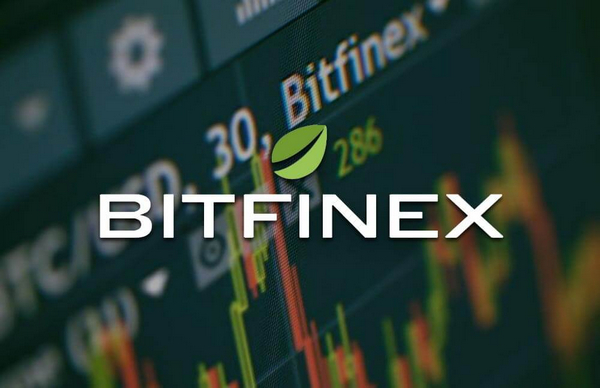
How to Avoid Financial Losses in Bitfinex Contracts: A Comprehensive Guide
In the world of cryptocurrency trading, Bitfinex stands out as one of the most popular exchanges for leveraged contracts. However, the inherent volatility of these contracts can lead to significant financial losses if traders are not adequately prepared. This guide will delve into the complexities of Bitfinex contracts and provide actionable strategies to minimize risk and maximize trading success.
Step 1: Understand Contract Basics
- Leverage: Leverage refers to the multiplier applied to your trading capital, enabling you to control a larger position with a smaller investment. While it amplifies potential profits, it also magnifies potential losses.
- Mark Price: The mark price is an indicator of the contract's current value, determined by the weighted average of trades on selected exchanges. It serves as the basis for calculating profit and loss settlements.
- Settlement Price: The settlement price is the final reference value used to determine the outcome of contracts at the time of expiration or settlement.
Step 2: Choose the Right Contracts
- Perpetual Contracts: These contracts have no fixed expiration date and continue indefinitely unless closed by the trader. They offer flexibility and allow for longer-term trading strategies.
- Futures Contracts: These contracts expire on a specific date, requiring traders to close their positions before expiration to avoid automatic settlement.
Step 3: Set Realistic Profit Targets
- Let Profits Run: Resist the temptation to prematurely close winning trades fearing potential reversals. Allow profitable positions to ride out fluctuations to maximize returns.
- Protect Profits: Gradual profit-taking intervals can help secure profits while mitigating the risk of substantial losses in case of unexpected market movements.
Step 4: Manage Risk Effectively
- Stop-Loss Orders: Place stop-loss orders to automatically close your position if the market falls to a predetermined level, limiting potential losses.
- Leverage Management: Utilize leverage wisely, choosing an appropriate multiplier based on your risk tolerance, trading experience, and market conditions. Avoid excessive leverage, which can quickly amplify losses.
Step 5: Monitor Market Conditions and Adjust Accordingly
- Fundamental Analysis: Stay informed about industry news, economic events, and regulatory changes that may impact market prices.
- Technical Analysis: Identify market trends, support and resistance levels, and use technical indicators to make informed trading decisions.
Step 6: Control Trading Emotions
- Psychology of Trading: Losses are inevitable in trading, and it's crucial to maintain emotional composure. Avoid impulsive decisions driven by fear or greed.
- Trading Plans: Stick to pre-determined trading plans, including entry and exit points, risk management strategies, and profit targets.
Disclaimer:info@kdj.com
The information provided is not trading advice. kdj.com does not assume any responsibility for any investments made based on the information provided in this article. Cryptocurrencies are highly volatile and it is highly recommended that you invest with caution after thorough research!
If you believe that the content used on this website infringes your copyright, please contact us immediately (info@kdj.com) and we will delete it promptly.
- Payments Giant Stripe Is Diving Back into the Crypto World, This Time With a Strong Focus on Stablecoins
- 2025-04-27 00:15:12
- Ozak AI (OZ) Emerges as a Rising Contender to PEPE's Meme Coin Crown
- 2025-04-27 00:15:12
- BTC Price Trades Close to $95k with an Expectation of $100k Retest Soon. Meanwhile, Norges Bank Investment Management Reported Q1 Loss of $40 Billion
- 2025-04-27 00:10:11
- The 5 Best Meme Coins to Invest in April 2025
- 2025-04-27 00:10:11
- 5 Best Crypto Casinos of April 2025
- 2025-04-27 00:05:12
- Gitcoin Sunsets Its Grants Lab Business Unit to Focus on Core Grants Program
- 2025-04-27 00:05:12
Related knowledge

What does the surge in SOL's cross-chain bridge inflows represent?
Apr 25,2025 at 09:00am
The recent surge in SOL's cross-chain bridge inflows represents a significant trend within the cryptocurrency ecosystem, particularly for Solana (SOL). This phenomenon highlights increased activity and interest in moving assets from other blockchains to Solana, indicating growing confidence in its network and ecosystem. Cross-chain bridges are essential...
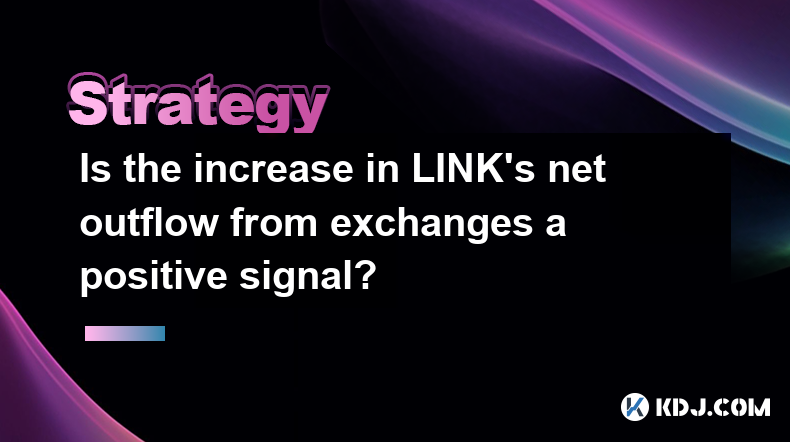
Is the increase in LINK's net outflow from exchanges a positive signal?
Apr 24,2025 at 02:35pm
The recent increase in LINK's net outflow from exchanges has sparked discussions within the cryptocurrency community about its implications for the token's future performance. LINK, the native token of the Chainlink decentralized oracle network, has seen a notable shift in its net outflow from exchanges, which many interpret as a positive signal. This a...
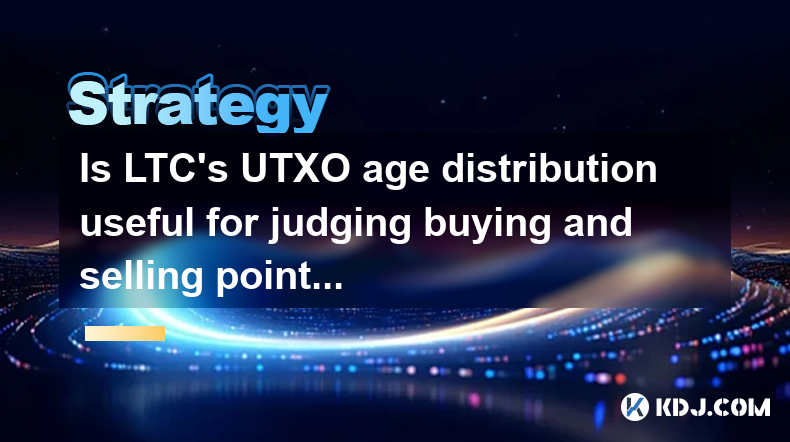
Is LTC's UTXO age distribution useful for judging buying and selling points?
Apr 23,2025 at 05:42pm
Is LTC's UTXO age distribution useful for judging buying and selling points? Understanding the UTXO (Unspent Transaction Output) age distribution of Litecoin (LTC) can provide valuable insights into the behavior of its holders and potentially help in making informed decisions about buying and selling points. The UTXO age distribution refers to the age o...
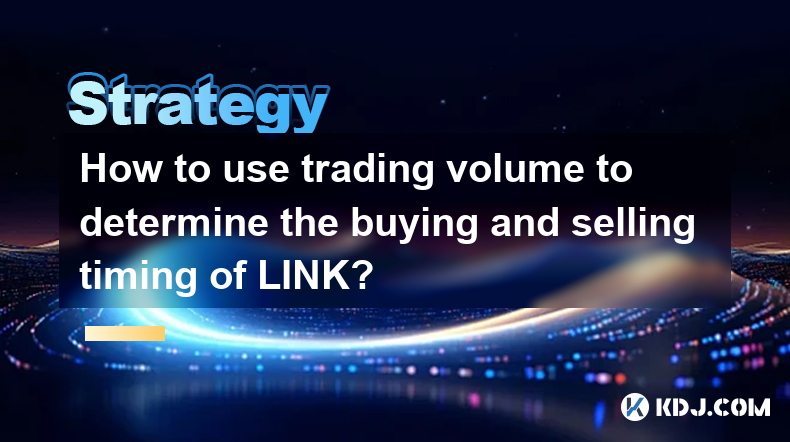
How to use trading volume to determine the buying and selling timing of LINK?
Apr 25,2025 at 02:07am
How to Use Trading Volume to Determine the Buying and Selling Timing of LINK? Trading volume is a crucial metric in the cryptocurrency market that can provide valuable insights into the buying and selling behavior of traders. When it comes to Chainlink (LINK), understanding how to analyze trading volume can help you make more informed decisions about wh...
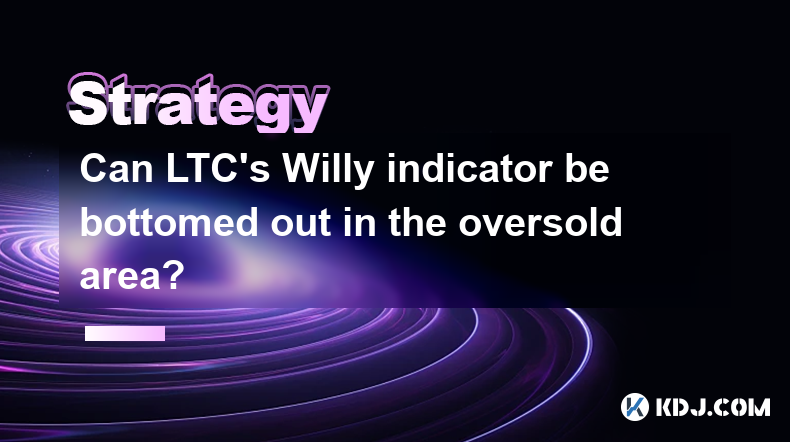
Can LTC's Willy indicator be bottomed out in the oversold area?
Apr 24,2025 at 01:43pm
Understanding the Willy IndicatorThe Willy indicator, also known as the Willy ratio, is a technical analysis tool used in the cryptocurrency market to gauge the sentiment of a particular asset, in this case, Litecoin (LTC). It is calculated by dividing the total trading volume of an asset by its market capitalization. The resulting ratio helps traders u...
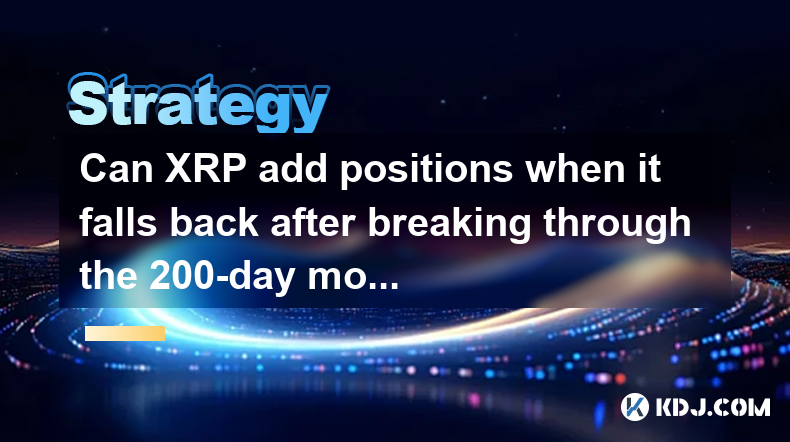
Can XRP add positions when it falls back after breaking through the 200-day moving average?
Apr 25,2025 at 04:49pm
The question of whether to add positions to XRP after it breaks through the 200-day moving average and subsequently falls back is a common dilemma faced by many cryptocurrency traders. The 200-day moving average is a widely recognized technical indicator used to assess the long-term trend of an asset. When XRP breaks above this level, it is often seen a...

What does the surge in SOL's cross-chain bridge inflows represent?
Apr 25,2025 at 09:00am
The recent surge in SOL's cross-chain bridge inflows represents a significant trend within the cryptocurrency ecosystem, particularly for Solana (SOL). This phenomenon highlights increased activity and interest in moving assets from other blockchains to Solana, indicating growing confidence in its network and ecosystem. Cross-chain bridges are essential...

Is the increase in LINK's net outflow from exchanges a positive signal?
Apr 24,2025 at 02:35pm
The recent increase in LINK's net outflow from exchanges has sparked discussions within the cryptocurrency community about its implications for the token's future performance. LINK, the native token of the Chainlink decentralized oracle network, has seen a notable shift in its net outflow from exchanges, which many interpret as a positive signal. This a...

Is LTC's UTXO age distribution useful for judging buying and selling points?
Apr 23,2025 at 05:42pm
Is LTC's UTXO age distribution useful for judging buying and selling points? Understanding the UTXO (Unspent Transaction Output) age distribution of Litecoin (LTC) can provide valuable insights into the behavior of its holders and potentially help in making informed decisions about buying and selling points. The UTXO age distribution refers to the age o...

How to use trading volume to determine the buying and selling timing of LINK?
Apr 25,2025 at 02:07am
How to Use Trading Volume to Determine the Buying and Selling Timing of LINK? Trading volume is a crucial metric in the cryptocurrency market that can provide valuable insights into the buying and selling behavior of traders. When it comes to Chainlink (LINK), understanding how to analyze trading volume can help you make more informed decisions about wh...

Can LTC's Willy indicator be bottomed out in the oversold area?
Apr 24,2025 at 01:43pm
Understanding the Willy IndicatorThe Willy indicator, also known as the Willy ratio, is a technical analysis tool used in the cryptocurrency market to gauge the sentiment of a particular asset, in this case, Litecoin (LTC). It is calculated by dividing the total trading volume of an asset by its market capitalization. The resulting ratio helps traders u...

Can XRP add positions when it falls back after breaking through the 200-day moving average?
Apr 25,2025 at 04:49pm
The question of whether to add positions to XRP after it breaks through the 200-day moving average and subsequently falls back is a common dilemma faced by many cryptocurrency traders. The 200-day moving average is a widely recognized technical indicator used to assess the long-term trend of an asset. When XRP breaks above this level, it is often seen a...
See all articles























































































